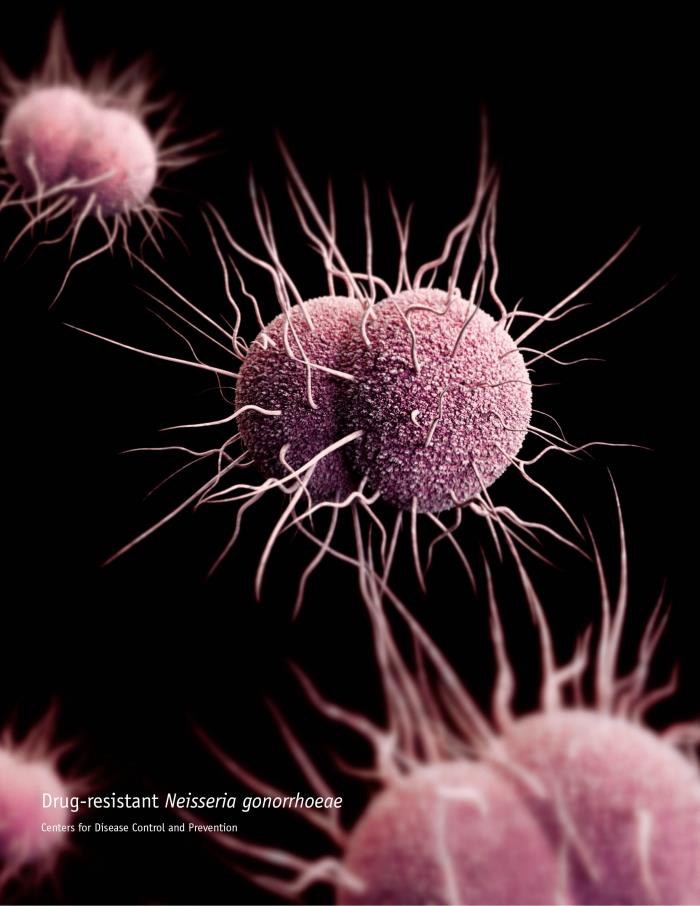Sexually transmitted infections (STIs) have a profound impact on sexual and reproductive health worldwide, and continue to cause a major burden of disease. Global estimates, published in the journal PLOS ONE today, show that an estimated 357 million new infections occur every year with one of 4 STIs: chlamydia, gonorrhea, syphilis and trichomoniasis.

Taken together with previous estimates of herpes simplex virus and human papillomavirus (HPV) infections, other important STIs, the data suggest that more than 1 million sexually transmitted infections are acquired every day. A large proportion of new STIs occur amongst adolescents and young adults who may not be aware that they are infected – which can have a negative impact upon their future sexual and reproductive health.
STIs can have serious consequences not only on physical health, but also on the psychological and social well-being of those infected. If left untreated, both chlamydia and gonorrhea can lead to pelvic inflammatory disease, which can cause serious damage to women’s reproductive organs, and can in turn lead to infertility, as well as adverse pregnancy outcomes such as ectopic pregnancies.
Several STIs can also be transmitted from mother to child during pregnancy and childbirth. Syphilis in pregnancy leads to approximately 305 000 fetal and neonatal deaths every year and leaves 215 000 infants at increased risk of dying from prematurity, low-birth-weight or congenital disease.
HPV infection causes over 500 000 cases of cervical cancer and over 250 000 cervical cancer deaths each year.
Infection with STIs can also increase the risk of acquiring infection with HIV. People who are living with HIV are also more likely to transmit the virus to a partner if they are also infected with another STI.
Drug resistance, especially for gonorrhea, is a major threat to reducing the impact of STIs worldwide. Data suggests that infections with antibiotic-resistant strains of gonorrhea are becoming increasingly common. This is a major public health concern, particularly for the prevention of infertility in women.
The promotion of healthier sexual behaviors, including increasing condom use and sexual health education for adolescents, is critical for STI prevention. Improving access to testing and treatment is also a crucial part of the response to STIs, for example, ensuring all pregnant women are tested and treated for syphilis. However, much more needs to be done – particularly in areas where people do not have access to testing, treatment and care services.
A safe and effective vaccine against HPV can prevent this infection and its devastating consequences. Increased investment in research and development for new STI vaccines is key to halting the spread of other STIs, such as genital herpes, gonorrhea, chlamydia, syphilis, and trichomoniasis.
The collection of better data and improved national surveillance systems are needed to strengthen future estimates and inform policy and prevention methods – crucial for stopping the spread of STIs. For example, in partnership with WHO and its regional offices, the Gonococcal Antimicrobial Surveillance Programme (GASP) has documented the emergence and spread of antimicrobial resistance to gonorrhea since 1992, providing evidence to national, regional and global treatment guidelines.
WHO is developing three global health sector strategies for HIV, viral hepatitis and sexually transmitted infections to cover 2016-2021, which will be finalized for consideration by the 69th World Health Assembly in 2016. These Global Health Sector Strategies will be aimed at all countries across the world, and will have a particular focus on adolescents and key populations. The strategies will also highlight the importance of investment in research and innovation.
Related:
- Sexually Transmitted Infections: Those common and those not so common, Part 1
- Sexually Transmitted Infections: Those common and those not so common, Part 2


4 thoughts on “Sexually transmitted infections: 1 million cases acquired daily across the globe”